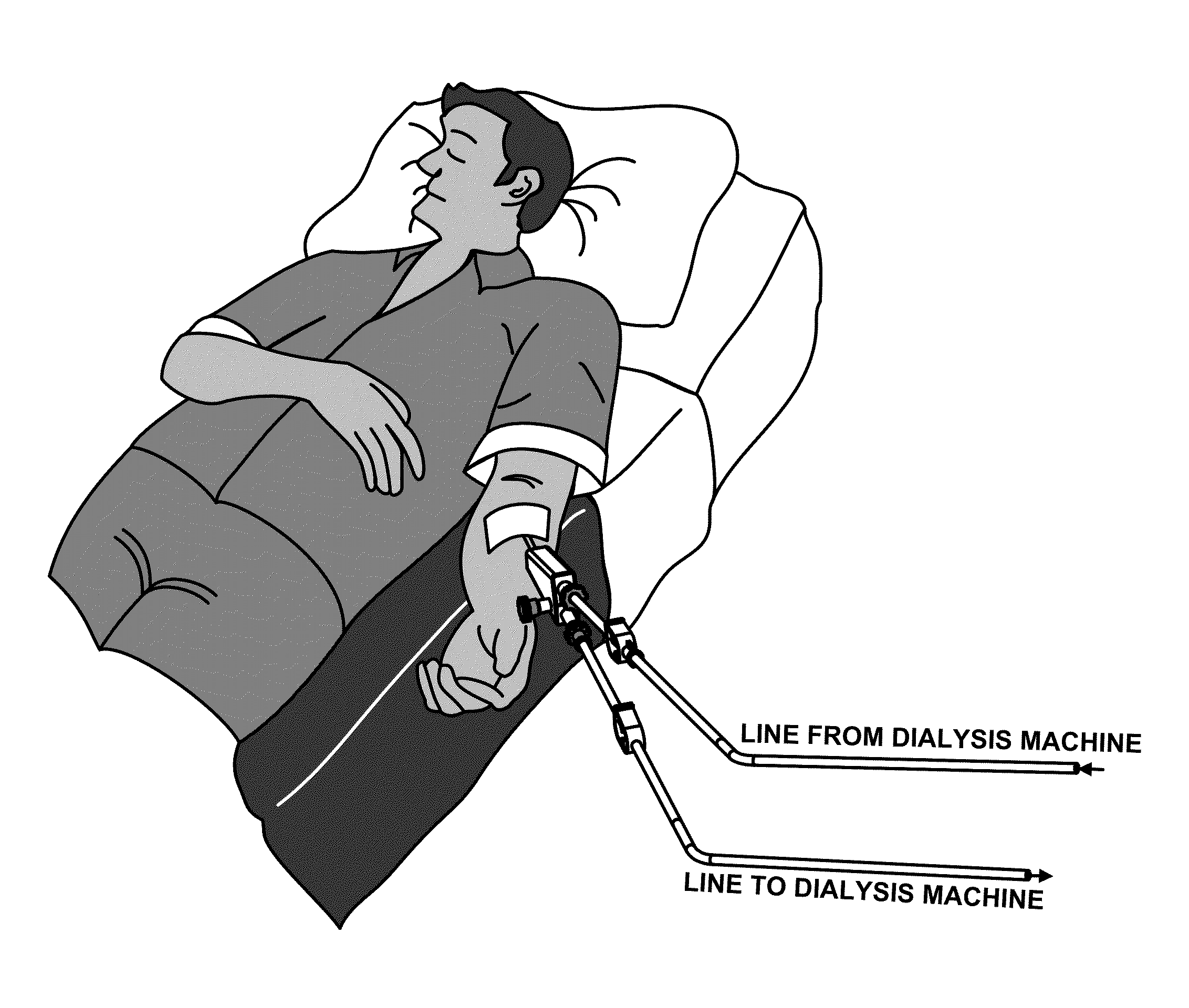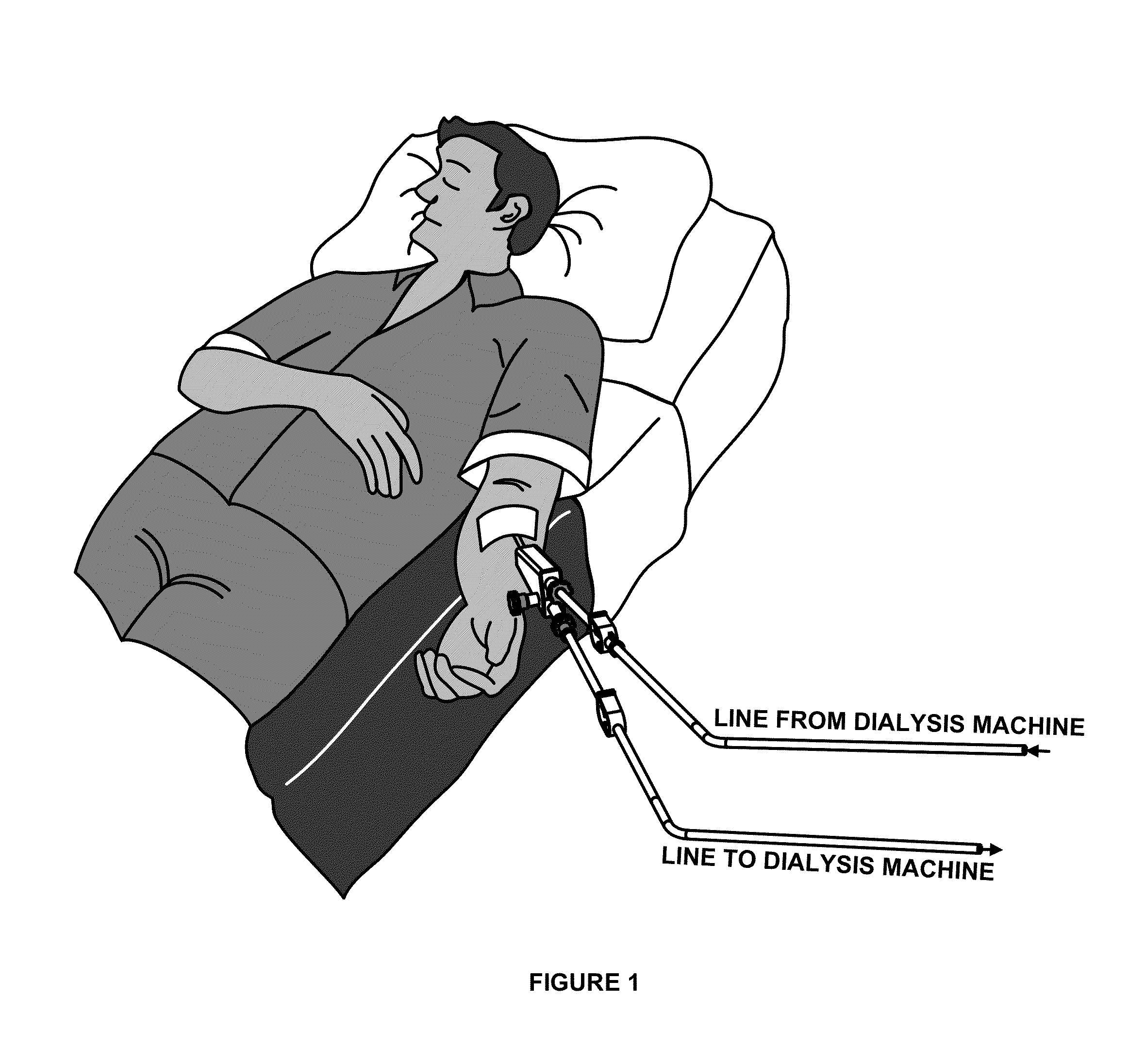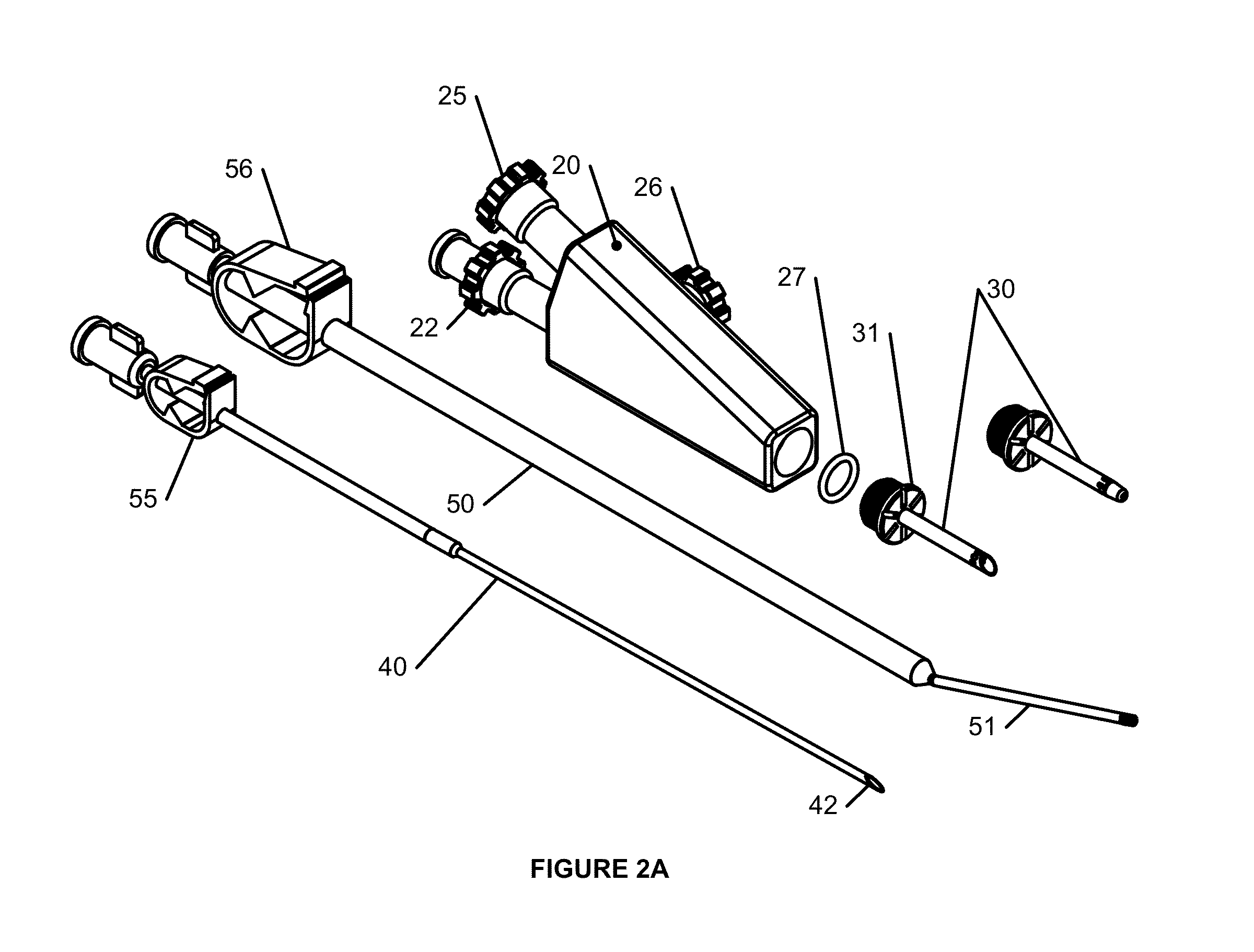Vascular access device for hemodialysis
a technology of vascular access and hemodialysis, which is applied in the direction of catheters, other medical devices, and kidneys that cease to remove waste and excess water, and can solve the problems of pain and trauma to access, the kidneys cannot save the life of patients, and the venous segment of the system cannot be venous, so as to minimize the pressure in the venous segment of the system, the effect of high blood flow ra
- Summary
- Abstract
- Description
- Claims
- Application Information
AI Technical Summary
Benefits of technology
Problems solved by technology
Method used
Image
Examples
Embodiment Construction
[0048]The vascular access device 10 is shown situated on a patient's arm in FIGS. 1-4. The vascular access device 10 includes a body 20 having an upper passageway 21 and lower passageway 23 in fluid communication with a vascular dilator 30. The lower passageway 23 is substantially straight linear through the body 20 to allow insertion and withdrawal of the cannulation needle 40. An end of the lower passageway 23 is provided with a small bore Tuohy Borst adapter 22. The small bore Tuohy Borst adapter 22 is provided with an adapter such as a Luer taper fitting to connect to a arterial tube 34 to carry blood to the dialysis machine. The upper passageway 21 intersects the lower passageway 23 as a side branch, forming a Y or V shape within the body 10. The angle alpha 24 between the upper and lower passageway is generally less than 30 degrees and preferably about 15 degrees. The small angles minimize pressure drop at the intersection of the passageways and makes venous tube 50 easier to ...
PUM
 Login to View More
Login to View More Abstract
Description
Claims
Application Information
 Login to View More
Login to View More - R&D
- Intellectual Property
- Life Sciences
- Materials
- Tech Scout
- Unparalleled Data Quality
- Higher Quality Content
- 60% Fewer Hallucinations
Browse by: Latest US Patents, China's latest patents, Technical Efficacy Thesaurus, Application Domain, Technology Topic, Popular Technical Reports.
© 2025 PatSnap. All rights reserved.Legal|Privacy policy|Modern Slavery Act Transparency Statement|Sitemap|About US| Contact US: help@patsnap.com



